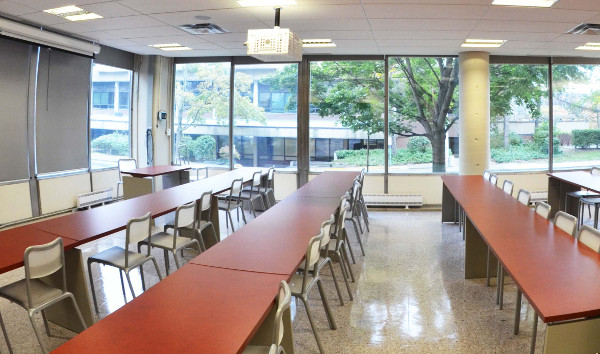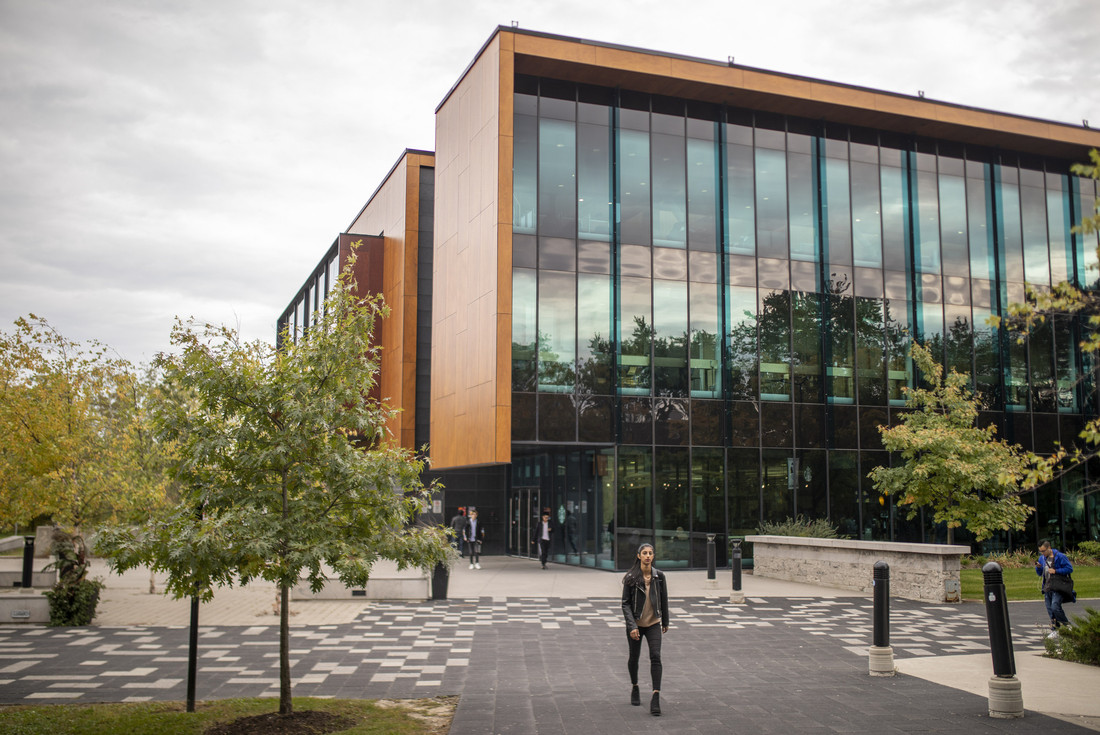Welcome to the Department of Anthropology! Take a virtual tour of our St. George campus location, or read more about all the campuses below.
Virtual Tour
 In 2007, the Department of Anthropology moved into a newly renovated 5-storey building at 19 Ursula Franklin Street. The Anthropology Building (AP) houses faculty, student and administrative offices, research labs for St. George graduate faculty, teaching labs, and storage for collections and artifacts. The building also houses the Archaeology Centre and the laboratory of Professor Carl Knappett, an archaeologist in the Art Department.
In 2007, the Department of Anthropology moved into a newly renovated 5-storey building at 19 Ursula Franklin Street. The Anthropology Building (AP) houses faculty, student and administrative offices, research labs for St. George graduate faculty, teaching labs, and storage for collections and artifacts. The building also houses the Archaeology Centre and the laboratory of Professor Carl Knappett, an archaeologist in the Art Department.
The Anthropology Building on the St. George Campus includes the following:
- Two teaching labs for undergraduate instruction – both have fully an integrated AV projector and are equipped with a range of ceramic and stone tools artifacts or reproductions, hominoid casts and human skeletons as well as a range of other teaching equipment for use in our biological anthropology and archaeology programs.
- Biological anthropology lab – contains an extensive collection of casts of fossil hominids and related primates and a associated casting lab
- Faunal archaeoosteology lab – contains one of Canada’s largest and most diverse reference collections of animal skeletons. It also contains a separate laboratory for preparing additional skeleton
- Ontario archaeology laboratory – used by researchers who wish to consult the department’s Ontario collections
- Microscopy lab
- Shared “wet” lab – a general-purpose lab for analyses not directly related to other labs, and is available to any faculty member or graduate student who requires it
- Linguistic anthropology lab
- A social-cultural lab
- Research laboratories – each UTSG archaeologist or biological anthropologist has an individual lab, configured for his or her particular research needs. Most labs contain several computers. In addition, depending on individual needs there are fume hoods, microscopes, calipers, electronic balances, light tables, map cabinets, thin-sectioning equipment, and a variety of other pieces of equipment. Faculty who do not have access to a specialized laboratory space have a “field archive room” located close to their offices, used for storing and analyzing field notes, maps, photos, tapes, and related data.

UTSC relocated to a new building in 2012. Facilities include:
- Three research laboratories
- A new bioanthropology teaching lab
- The Centre for Ethnography consisting of a seminar room with AV and computing facilities, and office space for affiliated researchers.

UTM moved into the new Health Sciences Center building in summer 2011, with faculty offices on the third floor and labs on the fourth floor. Facilities include:
- The central laboratory facilities all have top-line fume hoods, sinks, chemical and electrical facilities, and safety equipment.
- Two rooms for DNA-related analyses
- A security-controlled lab for forensics work
- Three rooms shared by the archaeologists for ‘dirty’ and ‘clean’ analyses of various type
- A paleoethnobotany-microscope lab which will include a desktop SEM as well as other microscopes and extensive archaeobotantical comparative collections, especially for Asia
- A GIS lab with GIS and spatial reconstruction/analysis software
- A linguistics lab
- Two state-of-the art labs with sinks, fume hoods, and specially designed storage for the range of teaching collections (archaeological and biological)
- A faunal processing lab run by the departmental technician, who has created an extensive working zooarchaeological collection of local mammals, birds, and fish, as well as more exotic animals acquired from connections with zoos and wildlife organizations.
The Forensic Science program is administratively connected to anthropology and physically located with it as well. UTM Anthropology has an outdoor experimental facility used for teaching and research in archaeology and forensic anthropology, and in 2010–11 this was combined with a historic cottage now used to stage crime scenes as well as for forensics teaching and research. All of these facilities and collections are used for research by graduate students and upper-level undergraduates, as well as faculty.
- All faculty and graduate students are provided with an account on the university mainframe computer. This account gives them access to e-mail, internet, library facilities, and various categories of software.
- At St. George campus, all faculty and graduate student workspaces are equipped with direct hard-wired internet connections, and we have also installed wireless internet access for all floors of the Anthropology Building except the basement. A graduate student computer lab is equipped with 4 computer stations, a printer and a scanner
- We have partnered with the UofT Department of Geography to acquire access to quality GIS software. GIS is also available at UTM.


